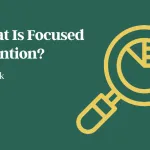⌄ Scroll down to continue ⌄
It’s 12:50 pm and you’ve just finished a lovely lunch with your colleagues and are heading back to the office to work on the report that your boss asked you to finish. You sit down on your new ergonomic chair and feel energized by the mini-party you had at lunchtime.
You log into your PC and then, suddenly it hits you – low energy levels dip, blurry vision, and trouble focusing. Yep, it’s the dreaded afternoon slump.
Every day, people all over the world between the hours of 1 pm and 3 pm hit a wall. It’s the void between the morning charge and the late afternoon push. A full stomach demands more blood and our body gives in to it, taking it away from our brain.
Lo and behold, we find ourselves struggling.
If you can relate, this article’s for you. But even if you can’t, the tips you find in this article will help boost your energy levels and allow you to perform at peak performance longer and more effectively.
6 Main Causes of Afternoon Slump
Let’s get one thing clear: the afternoon slump is a very real thing for most people. But—and it’s important to remember—it doesn’t have to be that way.
Before we get into the secrets of avoiding the afternoon slump, let’s first talk about its six main causes.
1. Circadian Rhythms
Humans are wired this way. Our circadian rhythms make us most sleepy from 1 pm to 3 pm and 2 am to 4 am. The early afternoon is also the hottest time of the day, which is why many countries in South East Asia start school early, to allow children to head home before 2 pm.
Growing up, many people in the Latin world enjoyed siestas—aka the afternoon nap. It didn’t make much sense to me at the time, but having played around with numerous time management techniques over the past 10 years, I can say that a short 30-minute siesta really helps boost my energy levels and productivity.
⌄ Scroll down to continue reading article ⌄
⌄ Scroll down to continue reading article ⌄
It turns out that I’m not the only one who enjoys a good nap. Winston Churchill, Leonardo da Vinci, John F. Kennedy, Albert Einstein, Ronald Reagan, Bill Clinton, Cristiano Ronaldo, Usain Bolt, and Lebron James are just a few of the big names that indulged in naps.
2. Poor Sleeping Habits
Again, we’re humans, not robots. Our body demands rest. While our bodies are built slightly differently, most people need between seven and eight hours of rest a night.
The problem is most people shortchange themselves when it comes to sleep. They try and squeeze in another episode of Game of Thrones or a few more games of Fortnite.
Teenagers are often most guilty of this, but adults are just as bad. The problem is that adults don’t have the unlimited energy levels and recovery speed that children possess.
3. Poor Eating Habits
We’ve all heard the expression, “you are what you eat.”
I remember a time when tennis stars had a very limited window where they could compete at the top level. In the 1990s, anything over 28 was considered old in the tennis world. Then, along came players like Roger Federer and Rafa Nadal who changed everything.
Their diet was a big part of their success allowing them to extend their winning years well into their late thirties.
4. Dehydration
Our body consists of up to 60% water. We need water to flush out our systems. It helps us avoid brain fatigue and gives clarity to our thinking. Yet, most people choose to consume coffee and soda.
Rather than giving our body what it needs, people instead try to hijack our systems and boost our focus with caffeine and sugar. While this can work in the short-run, it’s not an effective long-term solution and ends up doing more worse than good.
⌄ Scroll down to continue reading article ⌄
⌄ Scroll down to continue reading article ⌄
5. High Levels of Stress
Our body and mind build stress. When we experience stress, a hormone called cortisol goes into active mode, therefore leaving us to feel depleted and exhausted. Therefore getting adequate rest is important to managing different levels of stress.
6. Metabolic Disorders
It’s possible that you have an underlying metabolic disorder such as pre-diabetes or insulin resistance. If so, you’ll find yourself suffering more just after lunch if you’re not getting the food that your body needs. These are indicators to speak with a health care professional.
9 Tips on How to Curb the Afternoon Slump
So, now that we know why it occurs, let’s look at how to curb the afternoon slump and stay focused.
1. Get a Good Night’s Sleep
We only get one body, so it pays to take care of it. As I mentioned early, to perform at peak levels, most people require between seven and eight hours of sleep a night. It’s possible that might not be enough for you or that it’s too much.
We’re not all built the same, but statistically speaking, that’s the sweet spot: seven to eight hours.
2. Practice Hachi Bun Mei
Hachi Bun Mei is a common concept in Japan. It basically means that you should eat until 80% full. In other words, stuffing yourself at lunch is a recipe for disaster if you’re looking to avoid the afternoon slump.
Being slightly hungry keeps us awake. We’ve all had big lunches only to feel sleepy soon afterward and that’s because our body is sending blood to the stomach to digest it all. Then, the inevitable brain fog occurs.
So, the next time you find yourself wondering if you should finish off the huge sandwich you got for lunch or whether to keep it for later, do the latter. You’ll thank me.
3. Get Some Fresh Air
If there’s one lesson we should have learned from Covid and the lockdown, it’s that we need to get out from time to time.
⌄ Scroll down to continue reading article ⌄
⌄ Scroll down to continue reading article ⌄
Fresh air is an underrated productivity hack. Too often, we find ourselves in front of screens these days. Many of us spend more than half our working hours in front of a screen, only to pick up our iPads or iPhones during our breaks and on the train home.
Spend time away from the digital world and get some fresh air. It’s remarkable how much a 30-minute walk after your lunch break can do for your health and sanity, not to mention productivity levels.
4. Stretch
For most people, their lifestyles have become “sedentary.” For those unfamiliar with the word, it simply means to be inactive.
We need to counter our lack of movement with stretches at the bare minimum. Sitting at a desk all day long won’t help your energy levels. Instead, every 30 minutes, take the time to stand up, walk around a bit, and do some basic stretches. It’ll make a huge difference.
5. Practice Yoga
Stretches are good, but yoga is better. Unfortunately, you probably can’t do it right there in the office after lunch.
Yoga should be done first thing in the morning before you start your day. It’s remarkable how different you’ll feel when doing just a 20-minute session each morning.
6. Eat the Right Kinds of Food
There are good foods, and there are wrong foods. Fast food, energy drinks, caffeine, and carbs are just a few of the things that can doom your health if overdone. Instead, think salads, protein, and greens.
Read this article for tips on healthy eating: 15 Healthy Eating Tips from a Professional Health Coach
7. Say Affirmations to Yourself
Affirmations are extremely powerful. It’s easy to get pulled down by all the negativity we come across during our work, which can easily exhaust us. It can start to affect your mind, especially as the day drags on.
⌄ Scroll down to continue reading article ⌄
⌄ Scroll down to continue reading article ⌄
Saying affirmations is a way of boosting your mind with positivity. “I can handle anything that comes my way” is a good example of an affirmation.
Read this: 30 Daily Positive Affirmations to Boost Your Motivation
8. Smell Peppermint Oil
Smelling peppermint oil has been known to invigorate and improve mental function. Simply rubbing peppermint oil on your hands and patting your face gently is an easy way to give yourself a small healthy energy boost.
9. Meditate
We’re all logged into the matrix in one form or another. It has become a way of life. That’s why we need to do things that allow us to get away from it.
Meditation is all about clearing our minds and taking control of our thoughts. It’s another underrated technique that can help you deal with the stresses of life.
Here’re 7 ways to start meditating.
Final Thoughts
The afternoon slump is inevitable, as it’s practically a part of our DNA. But with a few simple changes to your lifestyle, you’ll be amazed at how much you’ll be able to avoid it and, in the process, boost your focus as well.
Featured photo credit: Miikka Luotio via unsplash.com














